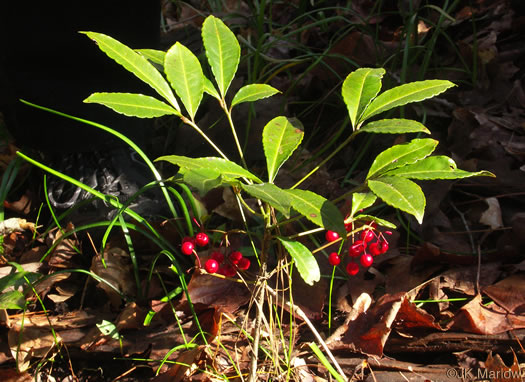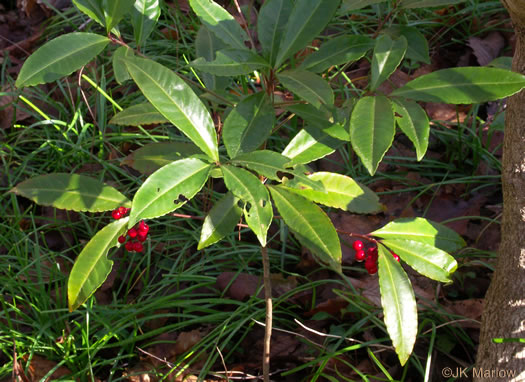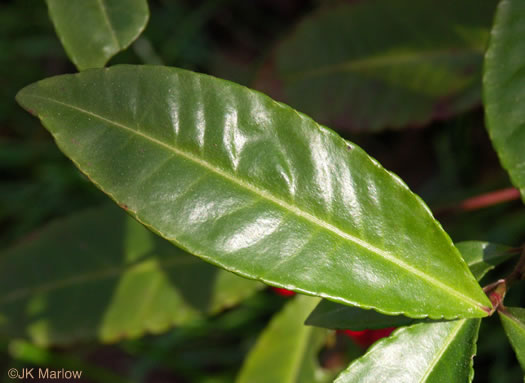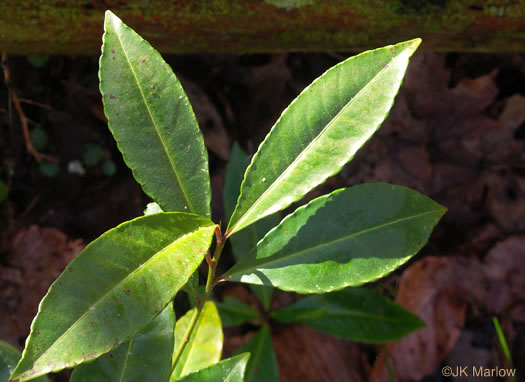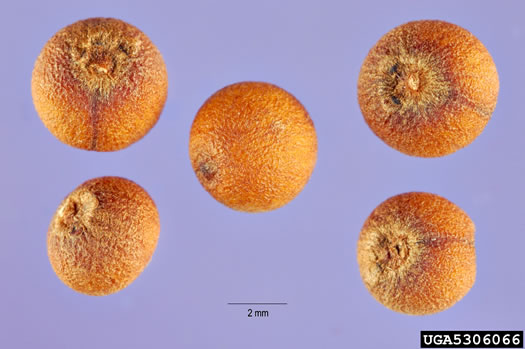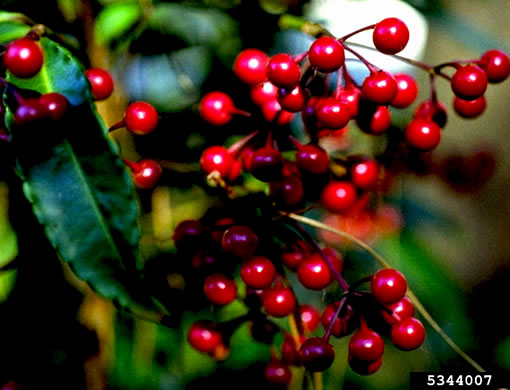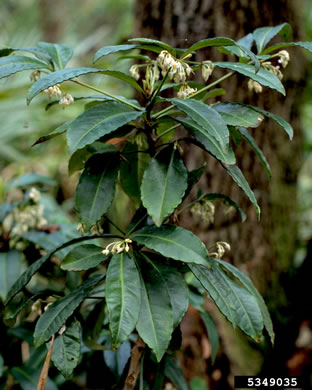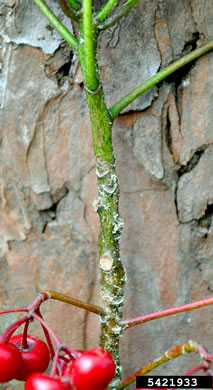Spermatophytes (seed plants): Angiosperms (flowering plants): Eudicots: Core Eudicots: Asterids: Ericales
WEAKLEY'S FLORA OF THE SOUTHEASTERN US (4/14/23):
Ardisia crenata
FAMILY
Primulaceae
Go to FSUS key
Dig deeper at SERNEC, a consortium of southeastern herbaria.
Check out EDDMapS.org to see where this has been reported.
Ardisia crenata is a very serious invasive, per Weakley's Flora (2022)
SYNONYMOUS WITH
PLANTS NATIONAL DATABASE:
Ardisia crenata
FAMILY
Myrsinaceae
SYNONYMOUS WITH Floristic Synthesis of North America. BONAP (Kartesz, 2021)
Ardisia crenata
SYNONYMOUS WITH Flora of North America north of Mexico, vol. 8 (2009)
Ardisia crenata
SYNONYMOUS WITH Floristic Synthesis of North America (Kartesz, 1999)
Ardisia crenata
SYNONYMOUS WITH -
Bladhia crenata
COMMON NAME:
Coral Ardisia, Hen's Eyes, Coralberry, Marlberry
To see larger pictures, click or hover over the thumbnails.
JK Marlow jkm100313_007
March Gadsden County FL
Angus Gholson Nature Park
Fruit spherical 1-seeded drupes, hanging down in fanned clusters, per A Field Guide for the Identification of Invasive Plants in Southern Forests (Miller, Chambliss, & Lowenstein, 2010).
JK Marlow jkm100313_012
March Gadsden County FL
Angus Gholson Nature Park
Leaves leathery with scalloped crenate margins & raised callused notches, per A Field Guide for the Identification of Invasive Plants in Southern Forests (Miller, Chambliss, & Lowenstein, 2010).
JK Marlow jkm100313_018
March Gadsden County FL
Angus Gholson Nature Park
Leaves oblanceolate to elliptic-lanceolate, crenate-undulate, per Manual of Woody Landscape Plants (Dirr, 1975+).
Ann Murray, University of Florida, Bugwood.org bug_5349035
Month Unknown
Flowers in axillary clusters dangling below the leaves, per A Field Guide for the Identification of Invasive Plants in Southern Forests (Miller, Chambliss, & Lowenstein, 2010).
WEAKLEY'S FLORA OF THE SOUTHEASTERN US (4/14/23):
Ardisia crenata
FAMILY
Primulaceae
SYNONYMOUS WITH
PLANTS NATIONAL DATABASE:
Ardisia crenata
FAMILY
Myrsinaceae
SYNONYMOUS WITH
Floristic Synthesis of North America. BONAP (Kartesz, 2021)
Ardisia crenata
SYNONYMOUS WITH
Flora of North America north of Mexico, vol. 8
Ardisia crenata
SYNONYMOUS WITH
Floristic Synthesis of North America (Kartesz, 1999)
Ardisia crenata
SYNONYMOUS WITH
-
Bladhia crenata
If a search such as "Carex leptalea var. leptalea" doesn't deliver the results you want, try "Carex leptalea".
Or, to minimize chances of a misspelling, try just "Carex le".
Less is more: If "pencil flower" doesn't deliver the results you want, try "pencil".

